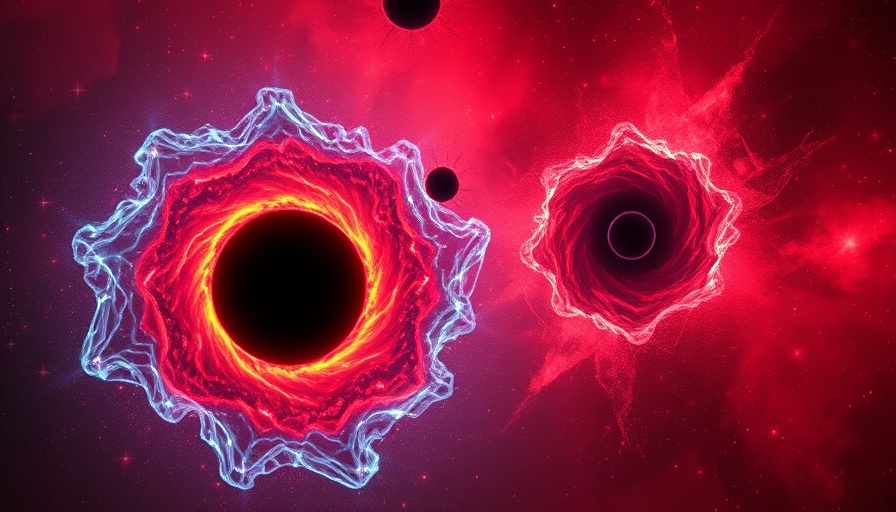
Understanding Primordial Black Holes: A New Perspective
In the vast expanse of our universe, black holes remain one of the most intriguing phenomena, especially those referred to as primordial black holes. These black holes, theorized to have formed in the first moments after the Big Bang, may hold the key to understanding how supermassive black holes became so enormous in the early universe. Recent complex cosmological simulations suggest that these primordial black holes could have played a significant role in rapidly growing into supermassive giants, surpassing the mass of our sun by millions or even billions of times.
Revealing the Mystery of Supermassive Black Holes
The mysteries surrounding supermassive black holes have puzzled astronomers for years. The James Webb Space Telescope (JWST) has made groundbreaking discoveries, spotting supermassive black holes existing just 700 million years after the Big Bang. This observation has intensified the debate about how these celestial giants could form so quickly. Conventional theories suggest that it takes over a billion years for black holes to grow to supermassive sizes through mechanisms like gradual accretion of matter or the merging of smaller black holes. However, with evidence mounting from JWST, researchers now face a conundrum: how can black holes of such immense mass appear in the universe’s infancy?
New Research Offers Hope
The latest research indicates that primordial black holes, if they exist, could have significantly accelerated the growth of these supermassive black holes. These ancient black holes, distinct from the stellar-mass and supermassive varieties we know, represent a crucial piece in the cosmological puzzle. Unlike their stellar counterparts—which form from dying stars—primordial black holes could have formed directly from density fluctuations in the early universe, allowing them to gather mass at a faster rate.
What's Next for the Study of Black Holes?
As astronomers continue to reveal the secrets of the cosmos, understanding black holes remains a priority. The findings from JWST and other telescopes are pushing the boundaries of our knowledge, creating a rich ground for future investigations. The prospect of primordial black holes opens new avenues for scientific inquiry and could reshape our understanding of cosmic evolution.
Potential Implications for Space Exploration and Innovation
On the technological front, the continuous innovation in telescope capabilities, such as that seen with JWST, not only advances our understanding of astrophysics but also influences the development of technologies in other fields. The rigorous demands of astrophysical observation drive advancements in materials science, optics, and data analysis methods. Observational techniques may one day be applied in various sectors, including healthcare and environmental science, showcasing how discoveries in one domain can ripple through the fabric of technology and society.
What Can We Expect Moving Forward?
The next steps in our exploration of black holes and cosmic phenomena could radically alter our understanding of the universe. Researchers are urging for further studies on black hole formation and growth dynamics, potentially leading to new theories that challenge established cosmological models. As our observational tools improve, who knows what we might uncover next? The horizon of discovery appears vast and full of untold mysteries.
 Add Row
Add Row  Add
Add 




Write A Comment